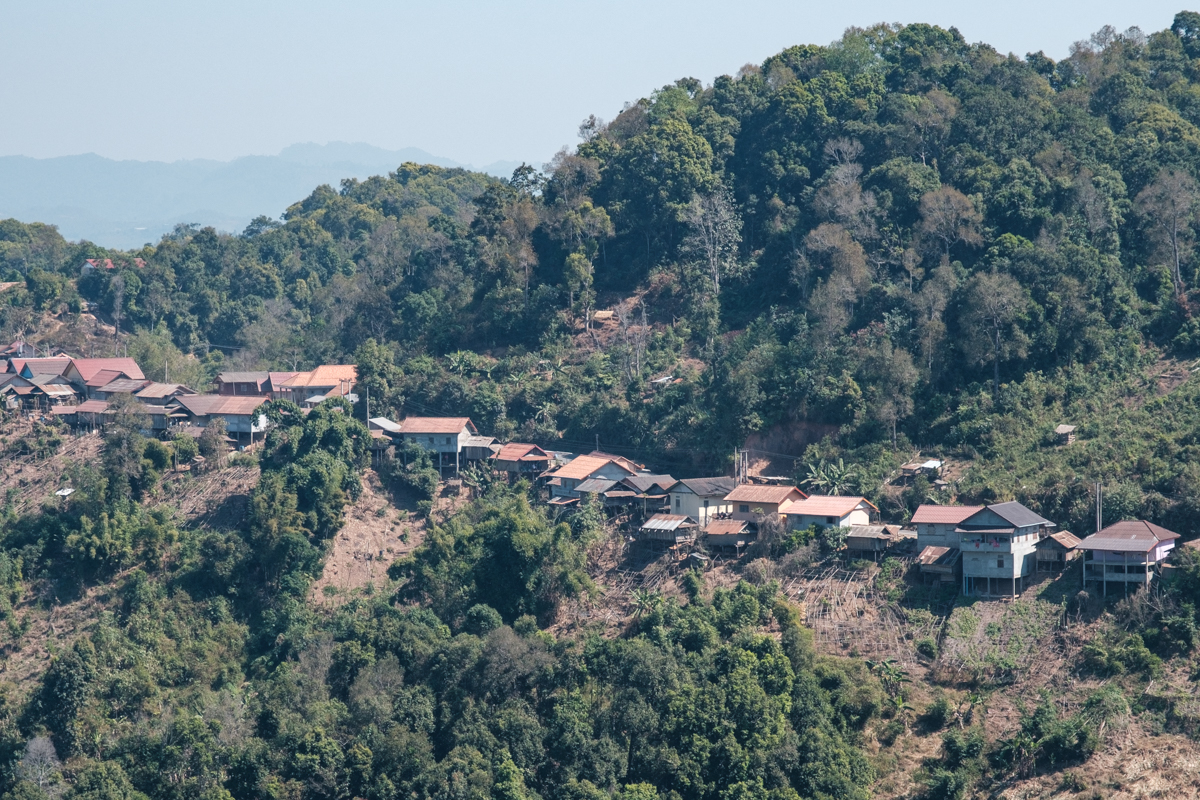Cycle Touring in Laos
Laos is one of the more adventurous cycling destinations in Southeast Asia – the terrain is exceptionally mountainous and the distances between food and amenities is far greater compared to neighboring countries.
We spent about a month bicycle touring the northern and central regions of the country in February 2023. While we did visit some popular destinations such as Luang Prabang, most of our time was spent in rural areas that were far from the tourist track. Below we’ll share our route and some practical tips for bicycle touring Laos.
Our Route

Download the GPX track of our Laos bicycle tour. NOTE: This is not a polished route and is intended for research purposes only.
The Northern Region
We crossed the Thai-Laos border at Huay Xai after our visas-on-arrival were approved, which was a quick and easy process. Bikes aren’t allowed on the Friendship Bridge, so we had to pack our bikes on a bus to be shuttled across.
We stayed a night in Huay Xai to get our bearings and do some last minute planning. For our first dining experience in Laos, we stumbled into a place that turned out to be more of a bar. Nevertheless, we were able to get a huge plate of fried rice and a few other things, and the table next to us continually offered to share their beer. There was live music too and it was a really fun night to begin our tour of Laos!
We’d heard from other cycle tourists that the children in Laos were extremely friendly, and as soon as we started riding out of town the next day, we confirmed that this was not an exaggeration. Children were constantly shouting “hello!” or “sabadee!” to us as we rode past, and occasionally a group of kids would line up along the side of the road for high fives.



We headed northeast along Highway 3 toward Luang Namtha, which took us through some very mountainous terrain and entailed lots of climbing. The grades usually weren’t too steep to ride, but there was almost never any flat ground. We didn’t see any other cycle tourists in this area, as many people opt for the two day slow boat along the Mekong River to Luang Prabang.


From Luang Namtha, we took Highway 13 south through Muang Xai and eventually to Luang Prabang – one of the most popular tourist destinations in Laos.
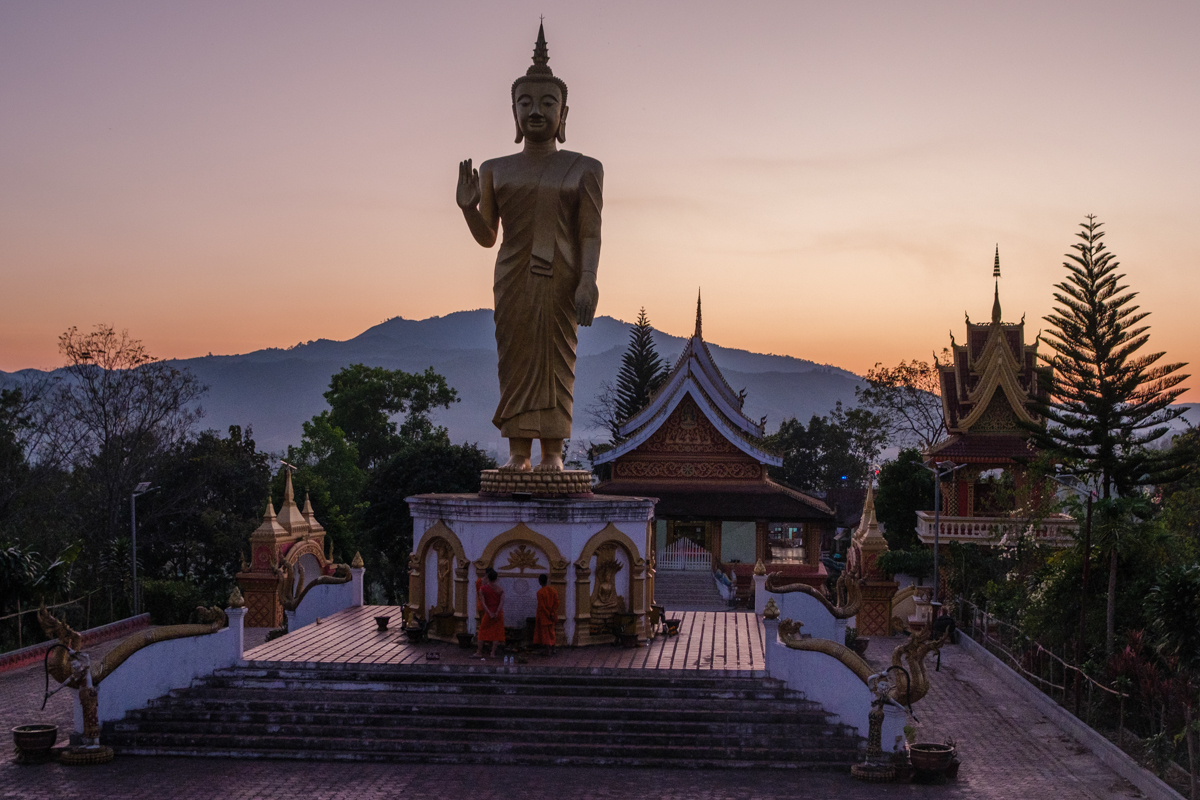

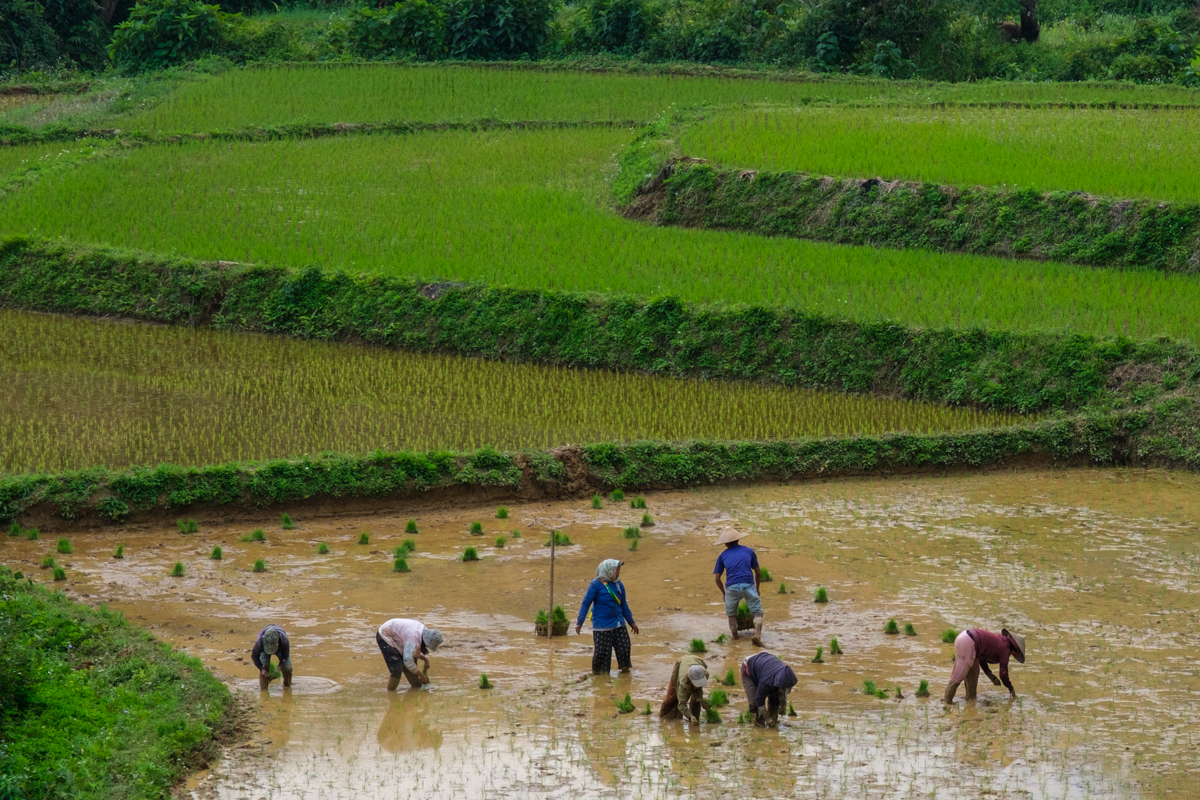
Luang Prabang
The ancient capital of Laos, Luang Prabang, was a very different experience from the rural villages we’d been riding through. Guesthouses were significantly more expensive, there were tons of tourists, and lots of varied dining options. Despite being somewhat overrun with tourists, it was a nice place to relax after our challenging route through the mountains with few amenities. The city is famous for its heritage buildings and numerous Buddhist temples, and it’s a beautiful place to just walk around and take in the architecture.

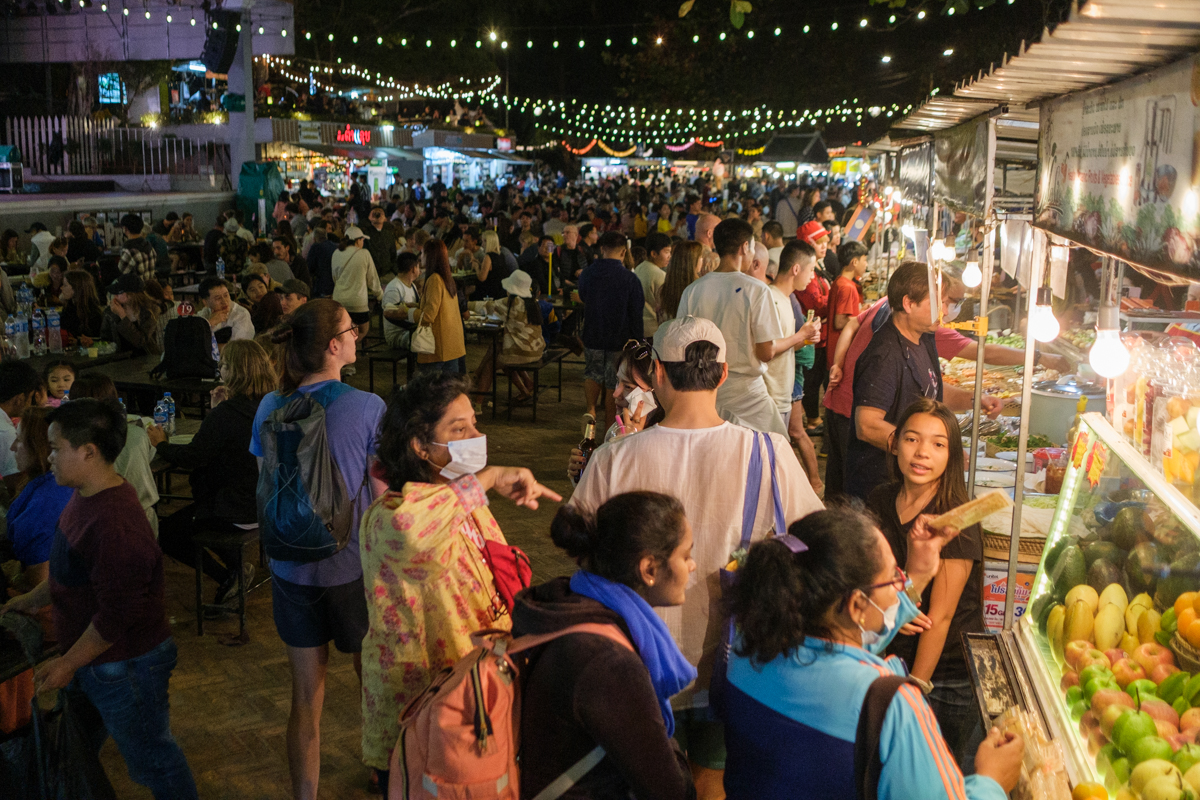
The Central Region
We continued south on Highway 13 after leaving Luang Prabang and made our way to Phonsavan to see the Plain of Jars, which is an archaeological site consisting of thousands of stone jars dating back to 500 BCE. This area was bombed heavily during the Vietnam War, and we frequently saw Mines Advisory Group (MAG) trucks that work to find and destroy unexploded ordnance.


From Phonsavan, we rode southeast through Thathom and Viengthong to reach the Nam Phao border with Vietnam. This part of the country had a ton of beautiful geologic features and fantastic cycling roads. We had considered doing part of the Thakhek Loop, which is famous especially among motorcyclists, but our time in Southeast Asia was drawing to a close and we wanted to make sure we left plenty of time for Vietnam.
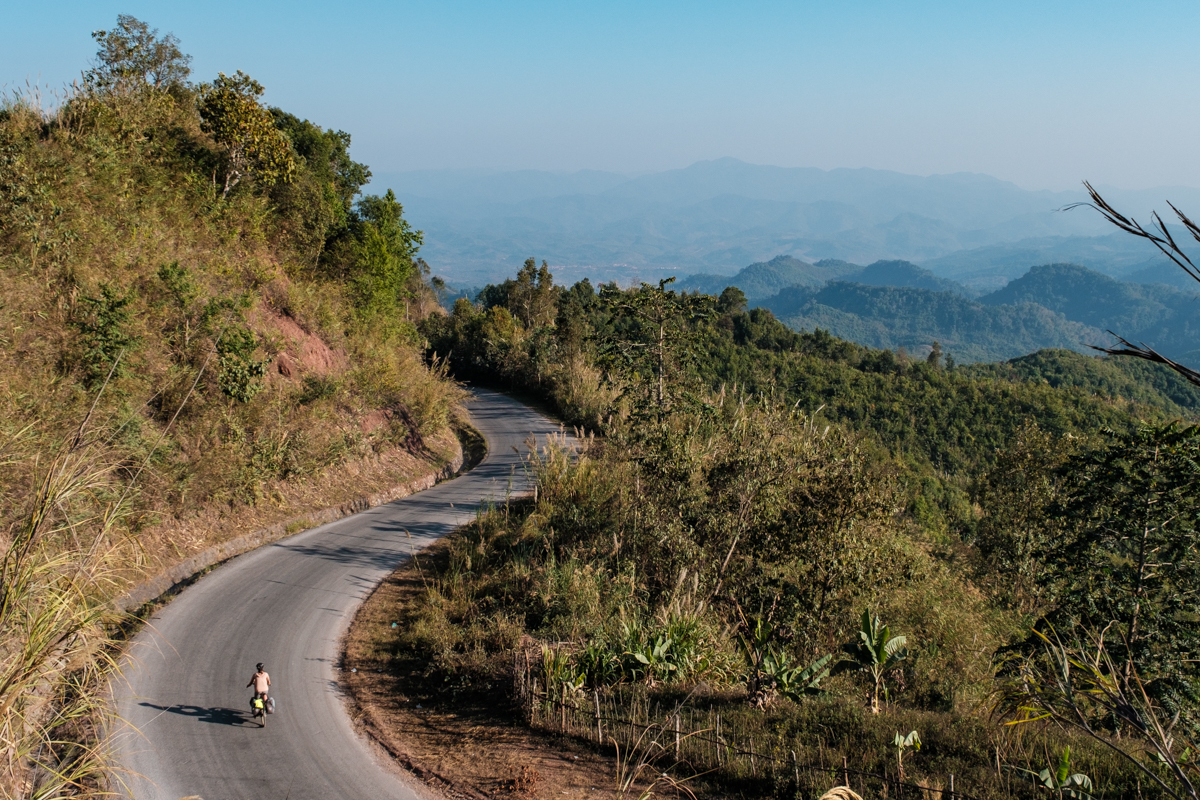
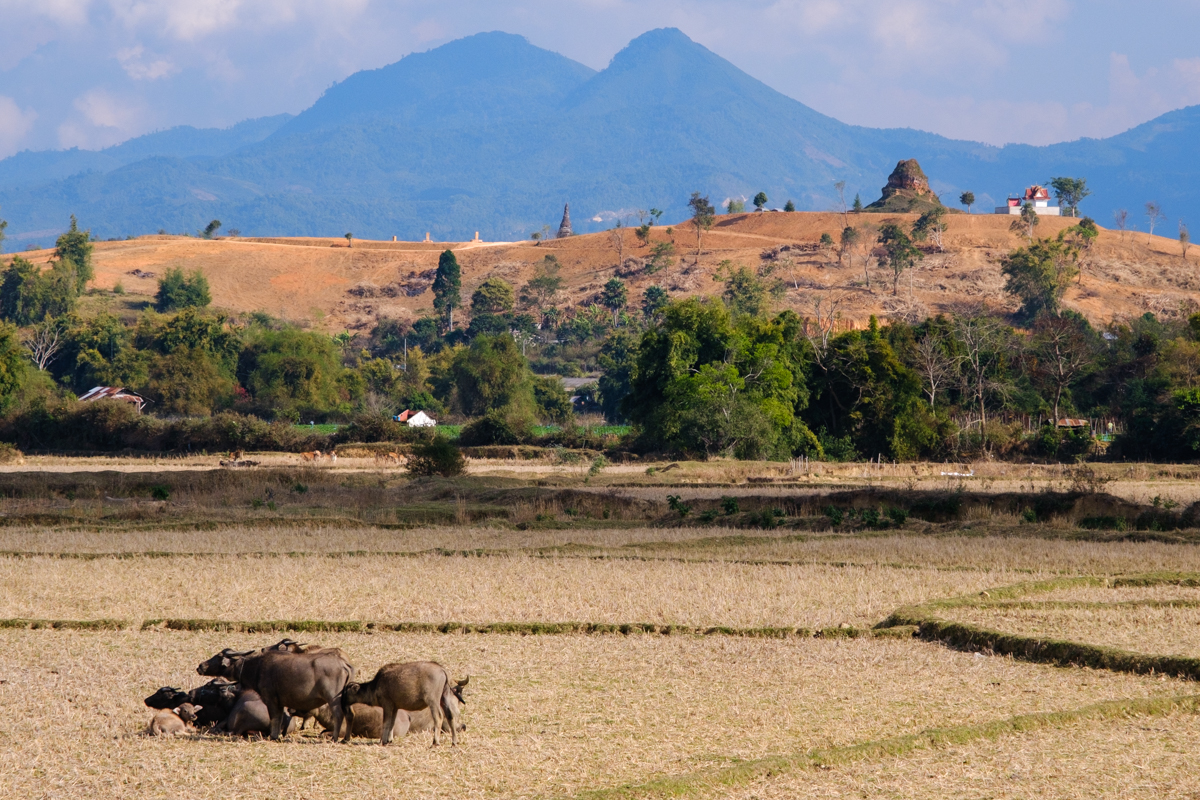



Food and Water
Finding food in rural Laos can be a challenge, especially if you’re used to carrying snacks with you to eat throughout the day. Small shops typically sold lots of sugary junk food that isn’t great when you’re burning a ton of calories. We usually don’t like to stop in the middle of the day for a big lunch, but that was often the best option to get something filling. Sometimes even finding a restaurant was tricky, as eateries are often very informal and consist of a couple women making noodle soup on the patio of their house.

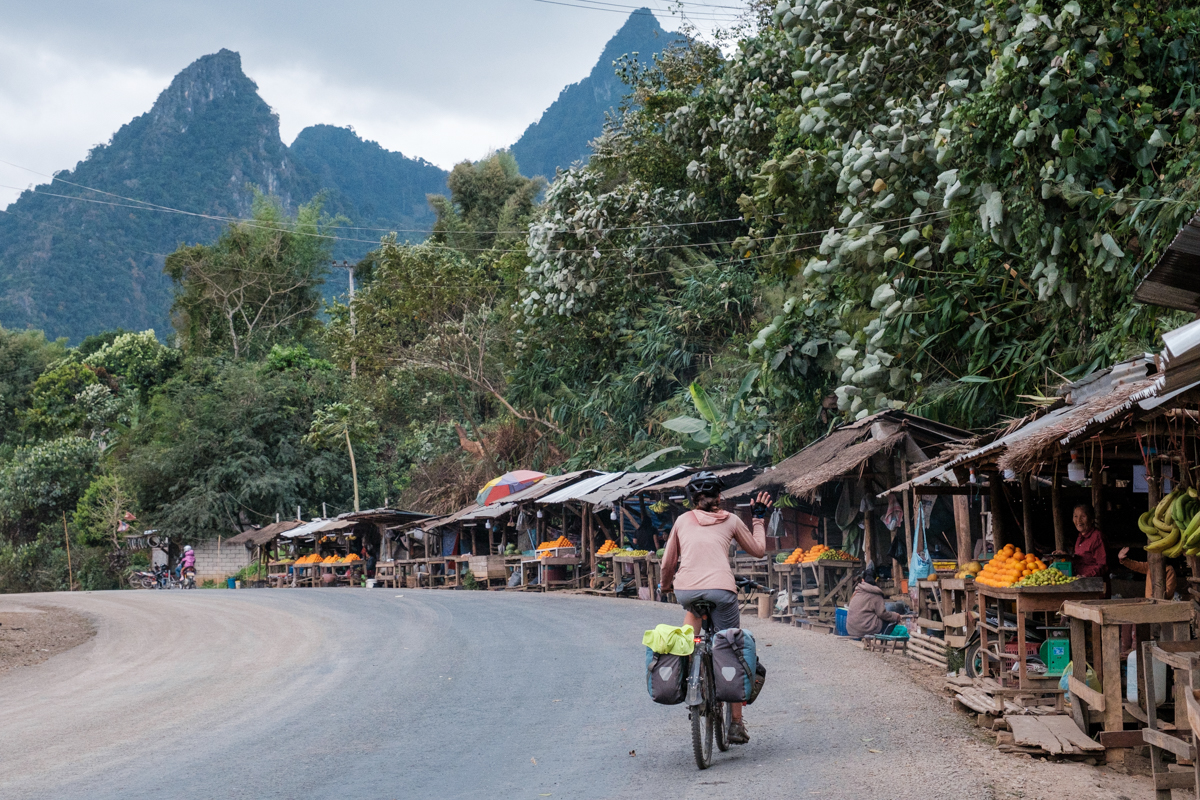
Guesthouses will often make food for you on request, or the owners can at least point you in the direction of a place that will make you a bite to eat. On our first night staying at a guesthouse in a rural village, there didn’t seem to be any food places whatsoever. We talked to the woman running the hotel through Google Translate, and she rode on her scooter to pick up some noodle soup for us. We felt sorry to be so needy, but it was dark at that point and she seemed more amused than anything at our helplessness.
Omelettes were a good go-to if we needed something filling and weren’t in the mood for noodle soup, and most places were willing to whip one up even if it wasn’t officially on the menu.
We usually try to avoid buying bottled water, but in Laos it was usually the best option. Tap water is not safe to drink. We’d occasionally filter water with our Sawyer Squeeze or use filtered water machines when they were available. We’d read that heavy metals were a problem across Southeast Asia, and our Sawyer doesn’t filter those out, so we only filtered our own water when it was a necessity.


Lodging
Guesthouses in rural Laos are very basic yet affordable, while lodging in bigger cities is a few steps up in terms of both cost and quality. In the countryside, most of the places we stayed had squat toilets and cold showers but were very cheap – roughly $4-$7 per night in 2023. Hotels in Luang Prabang were significantly more expensive ($30 per night) but were more spacious and had better amenities. Less touristy towns like Phonsavan were a nice middle ground – you could find a pretty comfy room for around $15.
Beds in Southeast Asia are HARD. Best to just get used to it!

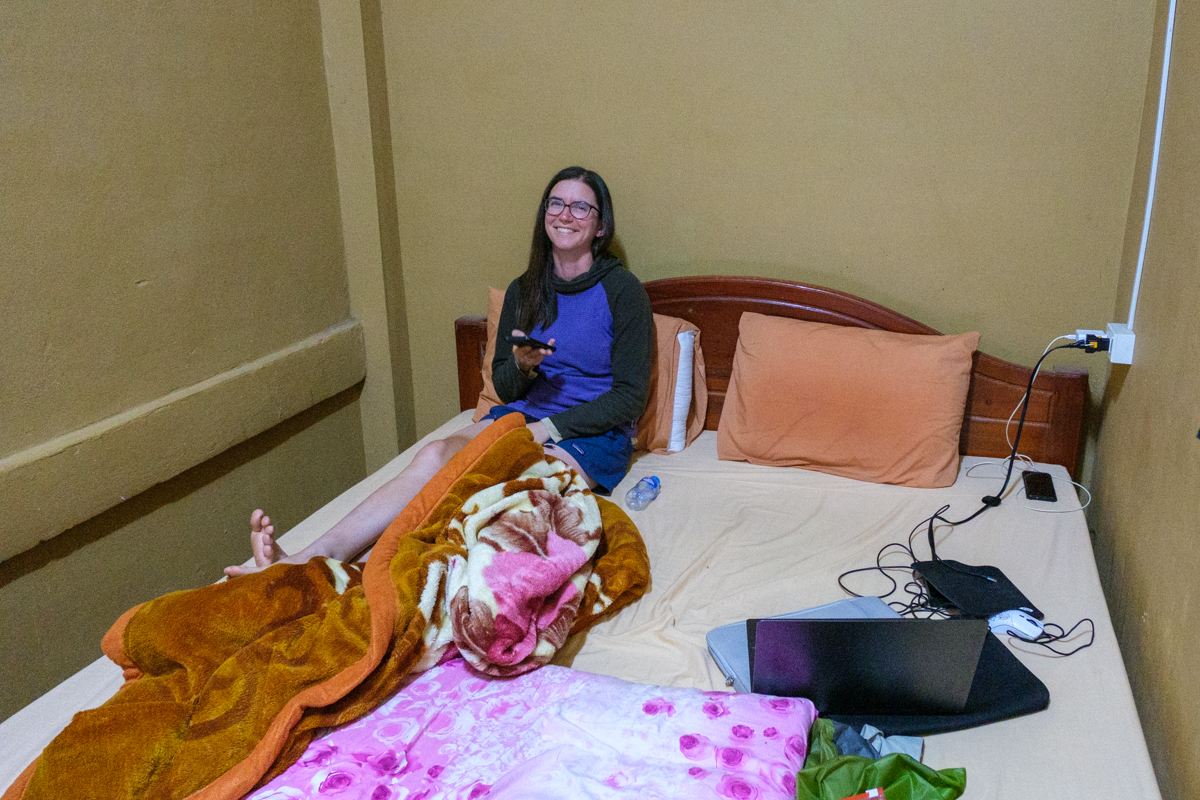
Camping
There were a couple times in the mountainous areas where we simply couldn’t make it far enough to get to a guesthouse. The biggest issue in finding a camp spot was the lack of flat ground!
The first time we had to camp, we set up in an area just off the highway that was tucked behind some bamboo. The next morning around 7am, we woke up to some scooters pulling into our campsite, and it turned out that we were in the parking area for people that were harvesting bamboo from the hillside. Quite a wake up call! Despite the fact that we were totally in their way, the farmers thought we were hilarious and just parked around us.


Money
While some places in the bigger towns take credit cards, most of Laos is cash only. ATMs can be hard to find in the remote areas, so we always look ahead to find the next bank before leaving bigger towns.
During our time in SE Asia, we always struggled to quickly recognize the different bill increments. Often the numbers on one side are written in English and the other side is written in the local language. If you aren’t constantly organizing your money, it can look pretty confusing at first glance.
Several times when paying for something at a small shop, we’d be so slow at finding the right bills that the shopkeeper would literally go into our wallet and pull out the correct change. They would always show us the money at the end and we never felt like we were being scammed – it was honestly kind of a relief to have them just take the money we owed!
Haze and Dust
The dry season in Laos generally runs from October to April, and we were there during February. The lack of rain is appealing for cycling, but the downside is that the roads are extremely dusty. Even on the highways, we’d get coated with dust every time a car drove by. Sometimes we would wear a Buff around our faces if it got really bad, but often it was too hot for a face covering. The haze can also decrease visibility, so the scenic vistas aren’t as scenic as they’d usually be.
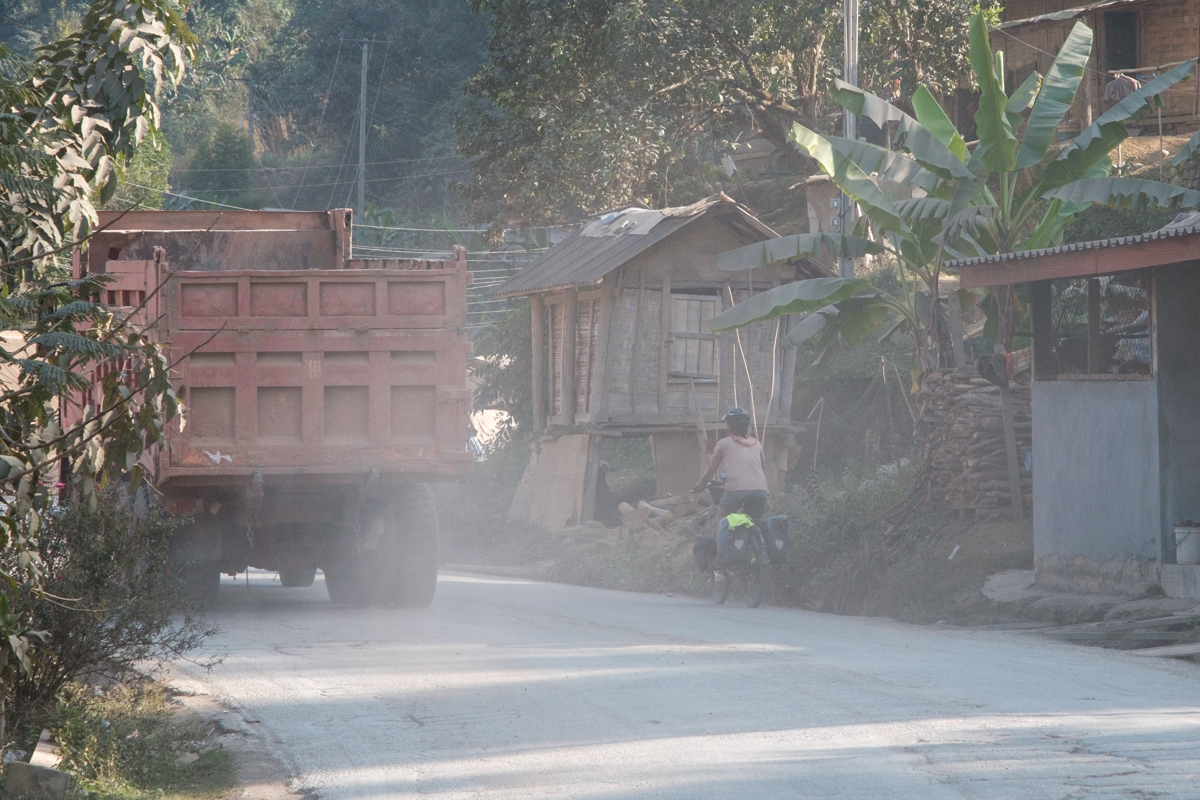
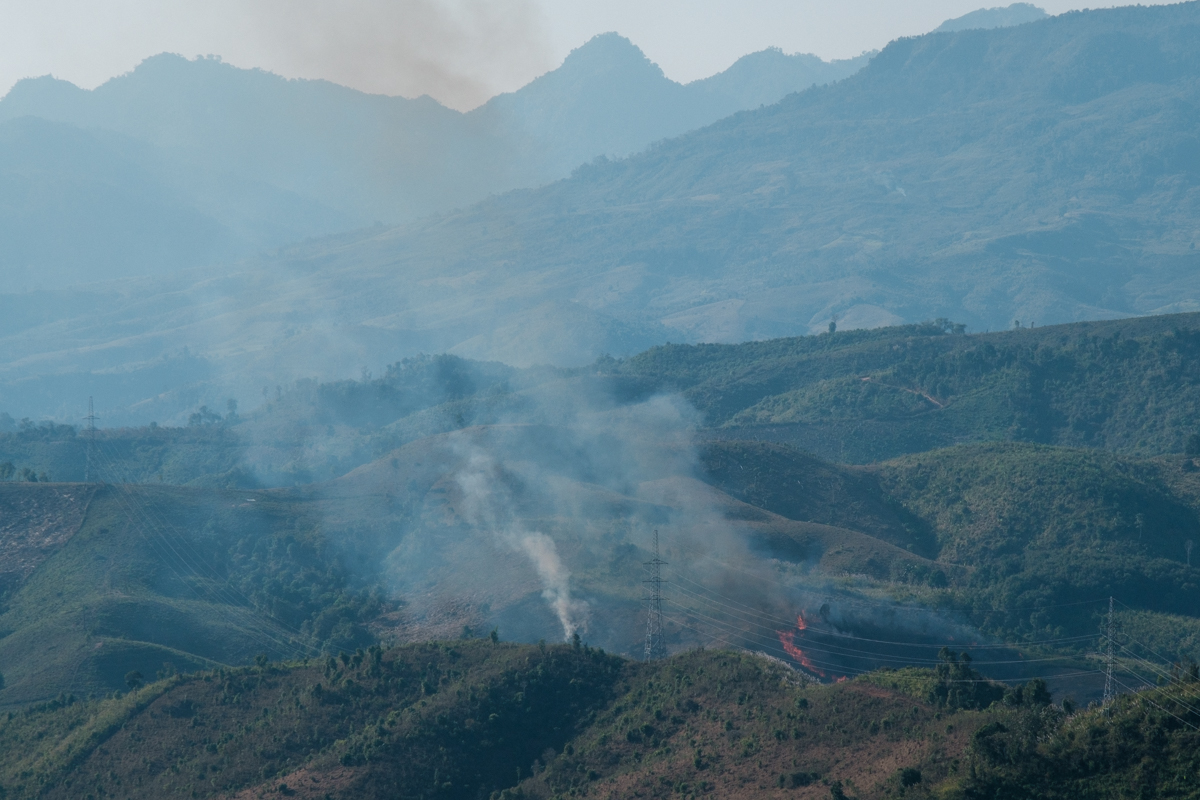
Final Thoughts
Laos was definitely a more challenging place to cycle tour after spending so much time in Thailand, which is much more set up for tourism. However, if you’re looking for an adventure that is off the beaten path with a lot of unknowns, Laos is a beautiful and fascinating country to explore!
